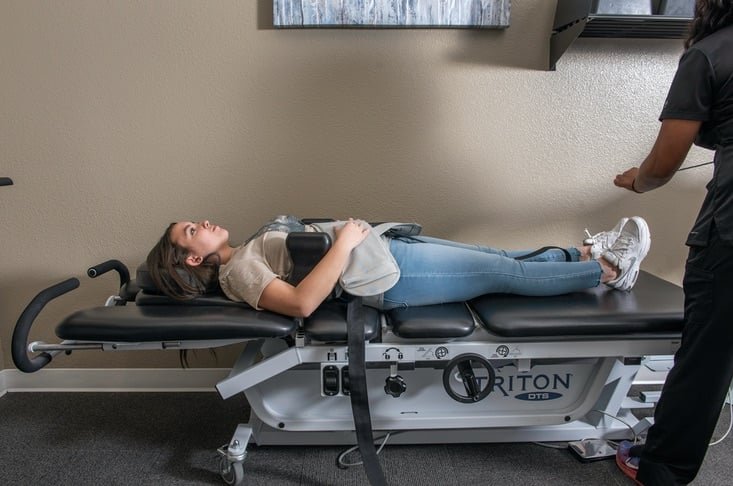How Spinal Decompression Relieves Nerve Pressure
Do you have a disc injury? Do you suffer from nerve pain down your arms or legs? If you said yes, then you have probably experienced spinal decompression from a physical therapist or chiropractor at some point. Spinal decompression is a common and effective method to relieving nerve pressure caused by a herniated or bulging disc. We offer several different methods of spinal decompression at CaliSpine that get results.
Our Advanced Approach to Spinal Decompression
Traditionally, spinal decompression is done passively through spinal traction techniques. The patient normally lies in a machine that gently pulls the upper and lower half apart. In this case, the machine does the work for the patient. At CaliSpine, our philosophy is that the human body is meant to be in a state of constant active movement. Decompressing the spine can be a powerful tool for recovery; however, we use active decompression along with scar tissue breakdown to reduce disc pain. Active decompression includes utilizing unique manual traction techniques that require the patient to resist our force.
Our approach can be used on a client at variable angles with variable intensities. Traditional traction machines are often unilateral and may not apply enough force to be effective for some individuals. This method and position allow the patient to resist and tuck their hips under (anterior pelvic tilt), strengthening the lower back and greatly altering their pelvic tilt. The patient then relaxes as the spine is lengthened.
We are still able to apply gentle traction to patients who are not suited for intense traction forces. This manual traction approach is mostly geared toward more active humans.
Why Should You Use This Type of Spinal Decompression?
Patients can increase their spinal range of motion instantly with our active spinal decompression technique. By supporting this new range of motion with corrective exercise, you will reduce your pain and recover faster.
If you would like to know more about our spinal decompression technique, fill out this form online.

